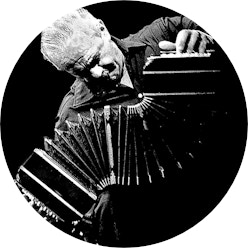
Ástor Piazzolla
March 11, 1921 - Mar Del Plata (Argentina) — July 4, 1992 - Buenos Aires (Argentina)
About
Piazzolla, king of tango, received a bandoneon from his father for his eighth birthday. At first disappointed, he nevertheless practiced the instrument tirelessly and by 1938 had reached a professional standard. Piazzolla, accompanied by his bandoneon, caused a sensation with Success in the carefree Argentina of the 1930s. In orchestras, concert and dance halls, the young musician accompanied singers, did orchestral arrangements and transcribed the most beautiful songs for his instrument. He learned his trade through practice.
From the 1950s onwards, Piazzolla wished to pursue his studies in France and turned to classical music, which he had always admired without ever having really played. The tango player met the incomparable Nadia Boulanger who gave him a few lessons but who above all encouraged him to return to his own Argentinean roots.
Back in Buenos Aires in 1957, Piazzola founded his own orchestra, the Orquesta de Cuerdas y Octeto Buenos Aires, and promoted his own music to help the tradition of tango evolve. Piazzola’s vision of the dance was so drastically different that his first innovative recordings stirred up a controversy. Preoccupied with breaking through different genres, the musician broadened his horizons and blended jazz, contemporary music and song with his tango.
Piazzola left a very distinctive music evoking laughter and tears, dance and contemplation. Sometimes melancholic and always sensual, Piazzolla’s works found a magnificent balance between genres, styles and eras. The composer-instrumentalist made numerous recordings and left behind a work of timelessness.

